What grind should I use for my cafetiere? (+ How to guide)
- Updated on: March 7, 2024
- Written by: Aimee Bennett
Aimee is a coffee enthusiast and has worked in the coffee industry for years. She sources coffee beans from around the world and her coffee journey began in… (read more).
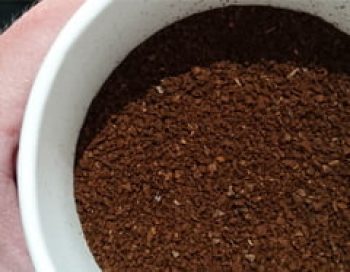
Use this simple guide to find out everything you should know about brewing with a cafetiere.
It is a simple process that can bring outstanding results. However, that doesn’t mean there isn’t room for error.
We have included how to guides, the best coffee recommendations and secret tips and tricks for getting the most out of this brewing method.
Read on to learn how you can master the cafetiere in just a few simple steps.
- What grind should I use?
- Why does the grind matter and how long do I leave coffee in?
- How many spoons of coffee do I use?
- How to use a cafetiere
- What is the best coffee for a cafetiere?
- Can I use Adams + Russell’s ground coffee in my cafetiere?
- How to make iced coffee with this brewing method…
- Why is my cafetiere coffee bitter?
What’s the Best Coffee to Use in a Cafetiere?
Of course, nearly all fresh coffees can be used in a cafetiere – when they are ground correctly (keep reading). However, we often recommend a few coffees to customers that come in to the roasters. These are listed below, simply click the links to read more about the origins of each one:
What Grind Should I Use For My Cafetiere?
The grind is important no matter what brewing method you decide to use. For the purpose of this post, we are going to focus on a coarse grind, as this is what we recommend for a cafetiere.
When experimenting with different grinds for brewing, there is a simple way to work out the best size. If the plunge is very easy to push down and there is no resistance, then the grounds are too coarse.
If the plunge is very hard to push down and there’s too much resistance, they are too fine. This is a good guide to use when finding the perfect grind size.
When grinding beans at home, there are two options; electric or manual. Both have their benefits and it is down to personal preference as to which one is best for you.
If you are looking for a stylish addition to your kitchen with adjustable grind settings and a free bag of coffee, take a look at the cafetieres available at Adams + Russell below.
Cafetieres At Adams + Russell
Why Does the Grind Matter and How Long do I Leave Coffee in a Cafetiere?
A cafetiere is a relatively slow brewing method in comparison to espresso machines. As the water is in contact with the ground coffee for several minutes, you want to use a coarse grind to avoid over-extraction.
What is coffee extraction?
Coffee extraction is the process of dissolving flavours from coffee grounds – usually in hot water. To achieve the perfect coffee, it’s important to use the correct quantity of coffee, the right grind size and then extract those grounds in the correct amount of time and temperature. You can read more about the concepts of extraction on Wikipedia’s coffee extraction page.
So, what is over extraction? And, how long do I leave the coffee in to avoid it?
So, when you go over the correct amount of time and temperature or the grind size is too small, the coffee becomes over extracted, and we end up pulling out the bitter and undesirable flavours. This can leave your cup tasting unpleasant and acidic.
Under extraction is the opposite. The grounds either haven’t been brewed for long enough, the water wasn’t hot enough or the grind size is too large, so barely any flavour is extracted. This leaves a very weak brew that is watery and barely resembles coffee.
It’s all about experimenting to find the perfect time, temperature and grind size for the water to reach the sweet spot in the grounds. Keep reading to find out how much coffee you should be using and how long to brew for…
How many spoons of coffee do I use in a cafetiere?
There are various recommendations for how much coffee to use in a cafetiere as everyone has their personal preference. However, here is a useful piece of advice to follow when using this brewing method:
You can easily dilute afterwards, but it’s difficult to make it stronger.
So, if you’re unsure, it’s best to add a little more than a little less. At Adams + Russell, we recommend using 15g of grounds for every 250ml of water.
In simple terms, this equates to about 1 scoop (or tablespoon) for 1 mug. Find our simple steps to the ultimate cafetiere brewing below…
How to use a cafetiere
- Always start by heating up the cafetiere (also known as a French Press) by filling it up with boiling water.
- If you have whole coffee beans, set your grinder to ‘coarse’ and grind enough to measure 15g of grounds per 250ml of water. Equally, you want to use approximately 55-60g of grounds to fill up a 1L cafetiere.
- Bring more fresh water to boil. Once boiled, leave the kettle for 2-3 minutes to allow the water to cool only slightly. Ideally, we want to use water that’s close to 92°C.
- Empty the cafetiere of the hot water.
- Add the measured grounds and fill half the cafetiere with water. Gently stir and leave the coffee to bloom for 30 seconds.
- Fill the cafetiere with water.
- Without pressing down, place the lid on the cafetiere. Leave to brew for 3.5 minutes before serving.
If you are not serving all of the coffee at once, make sure to decanter the coffee in a jug or pot to avoid it turning bitter.
Now you’ve got our top tips for brewing, find out our best recommendations for beans…
What is the best coffee for a cafetiere?
A cafetiere brings out a strong and intense flavour. This is perfect for those who enjoy strong, deep and rich flavours as well as a coffees that carry a lighter sweet taste.
Colombia Cafe Sofia
If you are looking for something a little less intense with more refined, sweeter flavours, we highly recommend you try the Colombia Cafe Sofia.
Experience light caramel flavours with an easy to drink acidity, making it an ideal coffee to use within a cafetiere.
Java
These Java beans are bursting with earthy flavours of tobacco and dark cocoa. The rich flavours carry through to the aftertaste and the refined acidity perfectly balances this coffee.
Brewing in a cafetiere will enhance these flavours and create an indulgent cup that is deep and full bodied. The low acidity makes this a pleasant, easy to drink option.
best coffees for cafetiere
-
Java
- £7.00 – £18.00
- Select options
-
Velvet Blend
- £7.00 – £65.00
- Select options
-
Colombia Cafe Sofia
- £7.00 – £18.00
- Select options
Can I use Adams + Russell’s ground coffee in my cafetiere?
Yes, our ground coffee is considered a medium coarse grind and can be used in the cafetiere.
However, for best results, we recommend ordering the whole beans and grinding them yourself. If you have any questions on grinders, coarseness or how to use your cafetiere, please don’t hesitate to contact us.
If you need more guidance on choosing for your taste, then have a read of our guide to the best coffee beans.
A hot cup of joe isn’t the only thing our beans can be used for, this iced coffee recipe is a must try…
How to Make Iced Coffee with a Cafetiere
Making iced coffee at home may seem complicated and time consuming, which is why many of us leave it to the baristas and get our cool caffeine fix from our local coffee shop.
But, we’re being honest when we say its super easy making your own iced coffee at home. We have one little trick that is going to take your delicious iced beverage to the next level… using a cafetiere.
Not only does this hack make brewing simple, but it also gives you the best flavour. Instant coffee may be quicker, but the taste can’t be compared.
The taste of iced fresh coffee on a hot Summers Day is one that can’t be comprised. Here’s how to do it…
- Grind just enough coffee beans for the amount of iced coffee you are making.
- Pour the grounds into the cafetiere and fill with fresh cold water.
- Stir together for a few seconds.
- Put the lid on but don’t press down the plunger. Place in the fridge to steep overnight.
- In the morning, take out the cafetiere and plunge.
- Pour your fresh iced coffee into a glass and serve with ice. Customise with syrups, milk, and other delicious additions such as ice cream or chocolate shavings.
Take a look at our Coffee Shop Style Drinks post for ideas on how to make coffee shop style beverages at home.
Why is My Cafetiere Coffee Bitter?
Coffee brewing is a delicate process and there are a few reasons why your coffee tastes bitter. The immediate reaction may be to blame the beans, but there are many other reasons as to why your brew isn’t turning out quite right…
Over brewing
So easy to do, yet so frustrating. Over brewing is where the grounds have been left in water to steep for too long. This brings out the bitter, undesirable flavours of your blend.
Boiling water
Many people use water that is fresh off the boil, however this is too hot for your grounds and can give them a burnt or bitter taste. The ideal temperature is around 92°C, so let the water cool down for a minute or two after boiling.
The grounds are too fine
A slightly coarser grind size is required for brewing with a cafetiere, so grounds that are too fine may be over extracted which results in a bitter cup.
Keep it clean
Left over residue from your previous brew could be causing the unpleasant taste, so make sure to thoroughly wash your equipment between every use.
Ok, it could be the beans
If you’ve covered all the previous points, it may be time to point the finger at the coffee. Low quality beans can have bitter characteristics no matter how hard you try with brewing, so make sure to always buy fresh high-quality coffee.


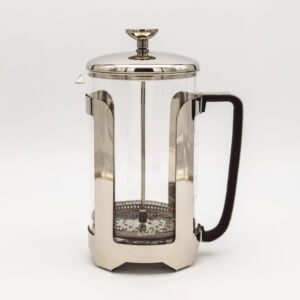
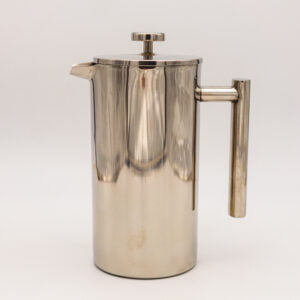
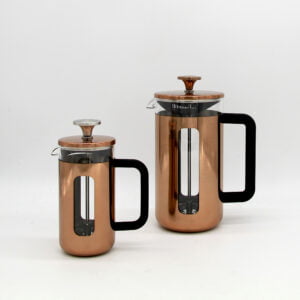
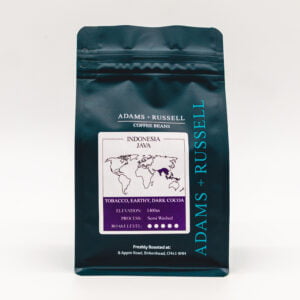
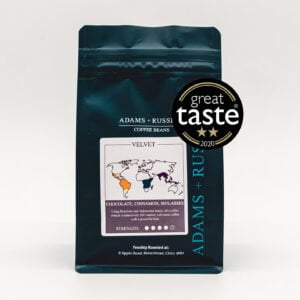
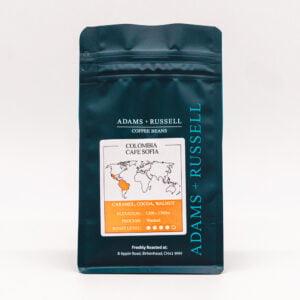



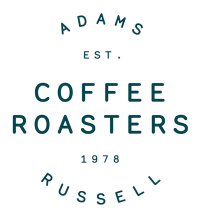
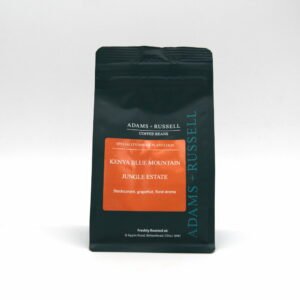
This Post Has 6 Comments
Thank you for helpful guide for cafetiere. Please put me on your mailing list. Thank you.
Thank you for excellent guide for cafetiere use. Have you amailing list please? J.S.
NO Problem J.S. Glad you found it useful. I’ve added you on 🙂 Matt
Can you make this guidance available as a PDF file? Thanks
Hi Frank, Sure, we will work on this and let you know when it is available. Thanks, Matt
Just the Information I was looking for. Thanks so much
Pingback: what coffee to use for espresso – The Coffee Around